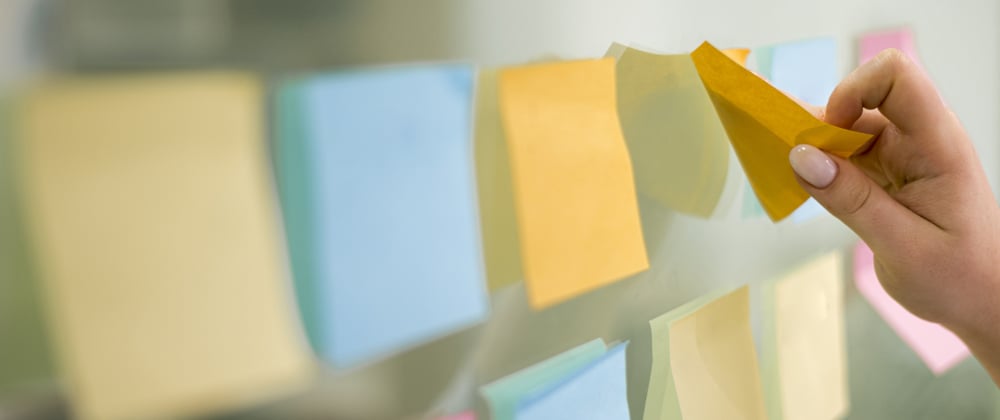A team retrospective is a meeting at the end of a sprint, project, or milestone where the team reflects on the past work cycle and identifies improvements. It involves celebrating achievements to raise the team spirit, gathering feedback on challenges, and planning how to execute better in upcoming sprints or projects. Retrospectives are essential for continuous improvement and team growth.
Retrospective meetings are structured to facilitate team discussions and beneficial outcomes. They usually start with an introduction, then input from each team member is gathered, presented, and discussed, and finally, the next steps are determined. Gathering input usually happens in parallel. Guided by the questions of a retrospective format, each team member writes up their thoughts on sticky notes and puts them on a whiteboard (or the digital equivalent in remote meetings).
I've had the opportunity to participate in, facilitate and experiment with several retrospective formats. Some formats are better for regular occurrences, e.g., at the end of sprints, and others can be great to mix things up, e.g., after finishing a large project. Here are my thoughts on and experiences with seven retrospective formats that you can use regularly:
The Standard
- What went well?
- What did not go well?
- What can we improve?
The standard format covers the main areas (positives, negatives, and improvements) with solid questions and is easy to understand. However, it can get boring over time, and a tendency to focus on negative experiences and improvements can cause celebrations to fall short.
The Standard with Token of Appreciation
- What went well?
- What did not go well?
- What can we improve?
- Who do you appreciate for their contributions?
A variant of the Standard retrospective that helps appreciate the team and its achievements is the token of appreciation. In addition to the three questions, every team member can call out others for their contributions. They would then receive a token of appreciation (e.g., a flower or chocolate) and positive feedback from the team. This variant can help make the standard retrospective more positive and strengthen the team spirit.
Start-Stop-Continue
- What should we start?
- What should we stop?
- What should we continue?
Start-Stop-Continue is another widespread retrospective format. It is very solution-oriented and focuses on changes in the form of starting and stopping activities. Positives and negatives are discussed for that purpose when needed.
The strength of Start-Stop-Continue is that it aims in on changes and leaves room for bringing in new ideas. However, this retrospective format might not go deeply into causes and problems, which may or may not be desired. Another drawback is that celebration and appreciation are not a direct part of this format.
Starfish
- What should we start?
- What should we do more?
- What should we continue?
- What should we do less?
- What should we stop?
The Starfish retrospective is an extension of Start-Stop-Continue. It adds the "What should we do more?" and "What should we do less?" questions that often come up. Typically it is represented by splitting the whiteboard into five areas (the starfish), and the team members put up their sticky notes in the corresponding regions.
While the Starfish retrospective improves on Start-Stop-Continue, it still lacks in the problem and appreciation areas. In addition, having to categorize ideas into do less vs. stop upfront is often not helpful.
4L
- What did you like?
- What have you learned?
- What was lacking?
- What did you long for?
The 4L retrospective is more positive than the Standard retrospective, and it encourages knowledge sharing through the "What have you learned?" question.
In practice, the difference between "lacking" and "long for" is relatively small and unclear, and there is a 3L retrospective that leaves out the "What did you long for?" question.
Mad-Sad-Glad
- What made you mad?
- What made you sad?
- What made you happy?
The Mad-Sad-Glad retrospective format uses the team members' emotions to draw out problems, identify positives, and build team cohesion that way. Mad-Sad-Glad can work well when used on occasion.
However, when used every cycle, it can lead to repeated venting and frustrations, especially when some of the issues that make team members unhappy are outside the team's control and not easily changeable. In this case, the team might focus on their negative emotions more than on improving things under their control.
Happy-Discuss-Improve
- What was I happy with?
- What ideas and topics would I like to discuss?
- What do I think needs to be improved?
The Happy-Discuss-Improve retrospective is a format that my team and I came up with after experiences with the above formats. It creates a positive atmosphere of appreciation, improvement, and openness needed to bring in new ideas and discuss problems. Wording the questions from the "I" perspective emphasizes that everyone has their own viewpoints and supports a balanced discussion.
Overall we were very happy with this format. It worked well for remote retrospectives. One possible enhancement to Happy-Discuss-Improve could be to add a token of appreciation.
There are many different retrospective formats and I have only described a small subset. Which team retrospectives work best for you and what do you like about them?



















